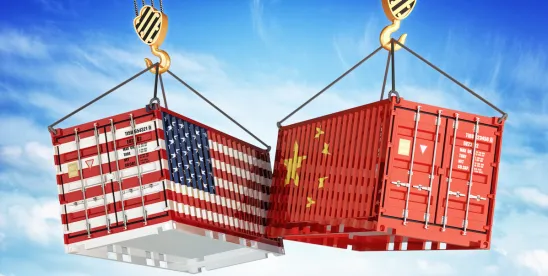On April 9, President Trump issued an executive order pausing certain new reciprocal tariffs announced last week while simultaneously substantially increasing tariffs on Chinese imports subject to those reciprocal tariffs. This was prompted by outreach from countries to negotiate the planned tariff increases and follows on changes announced April 8, increasing duties owed on Chinese origin imports and altering payments for de minimis shipments of Chinese origin goods.
Last week, on April 2, President Trump announced 10% reciprocal tariffs on the vast majority of imports from the vast majority of countries effective April 5. For certain countries, those 10% tariffs increased to higher country-specific rates at 12:01 am ET on April 9, 2025.
President Trump’s April 9 action notes that since his April 2 executive order, “more than 75 other foreign trading partners … have approached the United States to address the lack of trade reciprocity in our economic relationships and our resulting national and economic security concerns,” and therefore pauses the increase of reciprocal duties above 10% for all countries other than China through July 9, 2025. Shipments with an April 9 entry date may still be subject to the higher country-specific reciprocal tariffs unless qualifying for the “in transit” provision of the April 2 executive order. The higher country-specific reciprocal tariff rates will snap back into effect at 12:01 a.m. ET on July 9, 2025, absent additional executive action.
With regard to shipments from China, President Trump announced on April 8 an increase from the original 34% reciprocal tariff to 84%, effective April 9. The action yesterday, April 9, further increases the 84% reciprocal tariff rate to 125%, effective 12:01 am ET on April 10, 2025. In addition, the April 9 action, further increases the costs for de minimis shipments of Chinese origin products.
The scope and application of the reciprocal tariffs otherwise is unchanged. The following are excluded from any of the above tariffs regardless of country of origin:
- Donations intended to relieve human suffering, informational materials, importations ordinarily incident to travel to or from any country (such as personal luggage) and any other articles subject to 50 USC 1702(b);
- steel and aluminum articles and autos and auto parts already subject to Section 232 tariffs;
- all articles that may become subject to future Section 232 tariffs; and
- copper, pharmaceuticals, semiconductors, lumber articles, certain critical minerals and energy and energy products, as set out in Annex II.
For goods of Canada and Mexico, the existing February/March International Emergency Economic Powers Act (IEEPA) orders and exclusions are unaffected by these announcements. United States-Mexico-Canada Agreement (USMCA) eligible goods will continue to enter free of the newly announced reciprocal tariffs, and non-USMCA eligible goods will be subject to the same 25% IEEPA tariff as has been in place since March 4, 2025 (other than Canadian energy and potash, which will continue to be subject to a 10% IEEPA tariff that has been in place since March 4, 2025).
Customs guidance implementing the above was issued late April 9, 2025.






 />i
/>i

